shank
Experienced Member
So... In ~1985 or thereabouts Hitachi released a super Z80 called the HD64180. I got our Hitachi Rep to give me a sample and docs and set about designing the conversion for the Model II--seemed like a good way to have some fun. First thing was to build a proof of concept and that I wire-wrapped onto a Radio Shack prototype board. Somehow Frank Durda got wind of my project and came down to my office one day and said he'd been working on the same thing but hadn't gotten his hardware to work. I told Frank that my hardware did work but I hadn't implemented the routine in the boot ROM to turn the fancy features on yet. Whereupon Frank, not being one to waste any time, pushed a boot ROM across my desk to me! Thank you Frank!
Feeling scientific we resisted the urge to drop the modified ROM into the machine and instead we ran several programs while timing them with the stop watch we kept in our lab. MEM-II and several others. Then we switched the boot ROM, booted the machine and timed the programs again.
Speed gain was about 30%!
Not shabby for just screwing around....
I guess at that point we could have looked at modifying the memory board/s to take advantage of some of the HD64180's advanced memory management features, but we never got back to it--probably had to do some real work, or something. I ran it in my home machine for a couple of years...
Here are my notes... Because the timing of the Zilog and Hitachi parts were slightly different I had to delay one signal. My first stab was to just chain some buffers together and use the propagation delay through the device, but it wasn't sufficient. I ended up using a Model II delay line which had the perfect delay tap for the job, and that did it.
You'll note that it's a PLCC device... I really wanted a dual inline package, but the rep didn't have any. So I used what I could get. There is a jumper ribbon cable that plugs into the daughter card and over into the Z80A socket on the Model II CPU Card. The RG174 coax cable picks up a clock. Originally, I'd planned that if this worked, I'd do something more reasonable -- like a daughter card that plugged directly into the Z80A socket, but never did it.
This is the first I've seen of this in 33 years... Don't expect cogent answers if you have questions... but, I'll try.
-kb
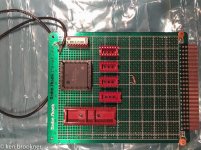

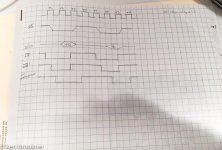
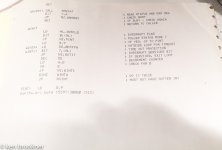
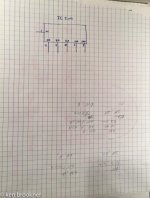
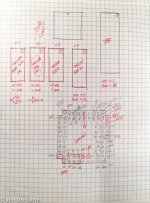

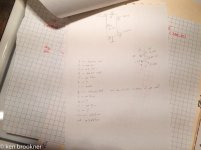
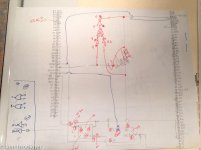
Feeling scientific we resisted the urge to drop the modified ROM into the machine and instead we ran several programs while timing them with the stop watch we kept in our lab. MEM-II and several others. Then we switched the boot ROM, booted the machine and timed the programs again.
Speed gain was about 30%!
Not shabby for just screwing around....
I guess at that point we could have looked at modifying the memory board/s to take advantage of some of the HD64180's advanced memory management features, but we never got back to it--probably had to do some real work, or something. I ran it in my home machine for a couple of years...
Here are my notes... Because the timing of the Zilog and Hitachi parts were slightly different I had to delay one signal. My first stab was to just chain some buffers together and use the propagation delay through the device, but it wasn't sufficient. I ended up using a Model II delay line which had the perfect delay tap for the job, and that did it.
You'll note that it's a PLCC device... I really wanted a dual inline package, but the rep didn't have any. So I used what I could get. There is a jumper ribbon cable that plugs into the daughter card and over into the Z80A socket on the Model II CPU Card. The RG174 coax cable picks up a clock. Originally, I'd planned that if this worked, I'd do something more reasonable -- like a daughter card that plugged directly into the Z80A socket, but never did it.
This is the first I've seen of this in 33 years... Don't expect cogent answers if you have questions... but, I'll try.
-kb









